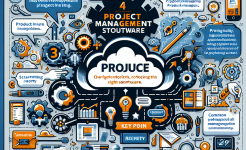The Integrated Product Development (IPD) process is a comprehensive and systematic approach that aims to optimize the product development cycle, enhance product quality, and improve overall business performance. At the heart of the IPD process lies the concept of Technical Review (TR), which plays a crucial role in ensuring the technical feasibility and success of product development projects.
TR in the IPD process is not just a simple review of technical aspects. It is a structured and in - depth evaluation mechanism that covers various dimensions of a product's technical design, development progress, and potential risks. By conducting regular TRs at different stages of the IPD process, companies can identify and address technical issues early on, prevent costly rework, and ensure that the final product meets or exceeds customer expectations.
The IPD process typically consists of multiple phases, from concept generation to product launch. Each phase has its own set of goals and deliverables, and TRs are strategically placed within these phases to provide timely feedback and guidance. For example, in the concept phase, TRs can help determine whether a proposed product concept is technically viable and aligns with the company's technological capabilities and strategic direction.
Innovative Thinking in TR
Innovative thinking in the context of TR within the IPD process involves breaking away from traditional review methods and adopting new perspectives. One aspect of innovative thinking is the use of data - driven approaches. Instead of relying solely on subjective opinions and past experiences, companies can leverage big data analytics to gather and analyze relevant technical data. This data can include information about component performance, manufacturing processes, and market trends.
Another innovative approach is the integration of cross - functional teams in TRs. By bringing together experts from different fields such as engineering, marketing, and manufacturing, a more holistic view of the product can be achieved. For instance, marketing experts can provide insights into customer needs and market trends, which can influence the technical design decisions during the review process. This cross - functional collaboration can lead to more innovative product solutions that not only meet technical requirements but also have a greater market appeal.
Furthermore, innovative thinking in TR also involves the use of emerging technologies such as artificial intelligence (AI) and virtual reality (VR). AI can be used to predict potential technical issues based on historical data and patterns, allowing for proactive problem - solving. VR can be employed to create virtual prototypes for more immersive and detailed technical reviews, enabling teams to identify and resolve design flaws in a virtual environment before physical prototypes are built.
Application Practice of TR in Different Phases of IPD
In the concept phase of the IPD process, TRs are focused on validating the basic technical concepts. The review team assesses whether the proposed product concept can be translated into a workable technical design. This includes evaluating the availability of key technologies, the compatibility of different components, and the overall technical architecture. For example, if a company is planning to develop a new smartphone with advanced camera features, the TR in the concept phase will review the state - of - the - art camera technologies, their power consumption, and how they can be integrated into the overall smartphone design.

During the design phase, TRs become more detailed. The focus is on the detailed design specifications, the selection of appropriate materials and components, and the manufacturability of the product. The review team will check if the design meets the performance requirements, such as speed, durability, and energy efficiency. They will also consider factors like ease of assembly and disassembly, which are important for post - sales service. For instance, in the design of a new laptop, the TR will evaluate the choice of motherboard, the layout of internal components, and the cooling system design to ensure optimal performance and manufacturability.
In the development and testing phase, TRs are centered around the verification and validation of the product. The review team will assess the results of various tests, including functional tests, performance tests, and reliability tests. They will also review the progress of software development, if applicable. Any issues identified during these tests need to be addressed promptly. For example, if a new software - based medical device fails certain functionality tests during development, the TR will analyze the root cause, whether it is a software bug or a hardware - software interface problem, and recommend corrective actions.
Challenges and Solutions in TR Application
One of the major challenges in applying TR in the IPD process is the resistance to change. Traditional review methods may be deeply ingrained in an organization, and employees may be reluctant to adopt new innovative approaches. To overcome this, companies need to invest in training and education programs. These programs can help employees understand the benefits of innovative TR methods, such as improved product quality and reduced development time. For example, training sessions on data - driven review techniques can show employees how to analyze relevant data to make more informed decisions during TRs.
Another challenge is the lack of effective communication and collaboration among different teams involved in the TR process. Cross - functional teams may have different priorities and communication styles, which can lead to misunderstandings and delays. To address this, companies can establish clear communication channels and protocols. Regular meetings and shared project management platforms can be used to ensure that all team members are on the same page. For instance, setting up weekly cross - functional meetings where each team can report on their progress and any issues related to the TR process can enhance communication and collaboration.
The complexity of modern products also poses a challenge to TR. With the increasing integration of multiple technologies in a single product, it becomes more difficult to conduct comprehensive and accurate reviews. To deal with this, companies can use advanced simulation and modeling tools. These tools can help in predicting the behavior of complex systems and identifying potential issues in advance. For example, in the development of an autonomous vehicle, simulation tools can be used to model different driving scenarios and test the vehicle's sensors and control systems during the TR process.
Conclusion
In conclusion, the effective application of TR in the IPD process is essential for the success of product development projects. Through innovative thinking, companies can enhance the quality and efficiency of their TRs. The use of data - driven approaches, cross - functional collaboration, and emerging technologies can bring about significant improvements in the way TRs are conducted.
Moreover, by understanding and addressing the challenges associated with TR application, such as resistance to change, communication issues, and product complexity, companies can ensure that the TR process runs smoothly. This, in turn, will lead to better - quality products, shorter development cycles, and increased competitiveness in the market.
Companies that embrace innovative thinking in TR and implement best practices in its application will be better positioned to meet the ever - changing demands of the market. They will be able to develop products that not only meet but exceed customer expectations, driving business growth and success in the long run. As the business environment continues to evolve, the continuous improvement of the TR process within the IPD framework will remain a key factor for companies aiming to stay at the forefront of innovation.
ARTICLE TITLE :Innovative thinking and application practice of TR in the IPD process ,AUTHOR :ITpmlib

















